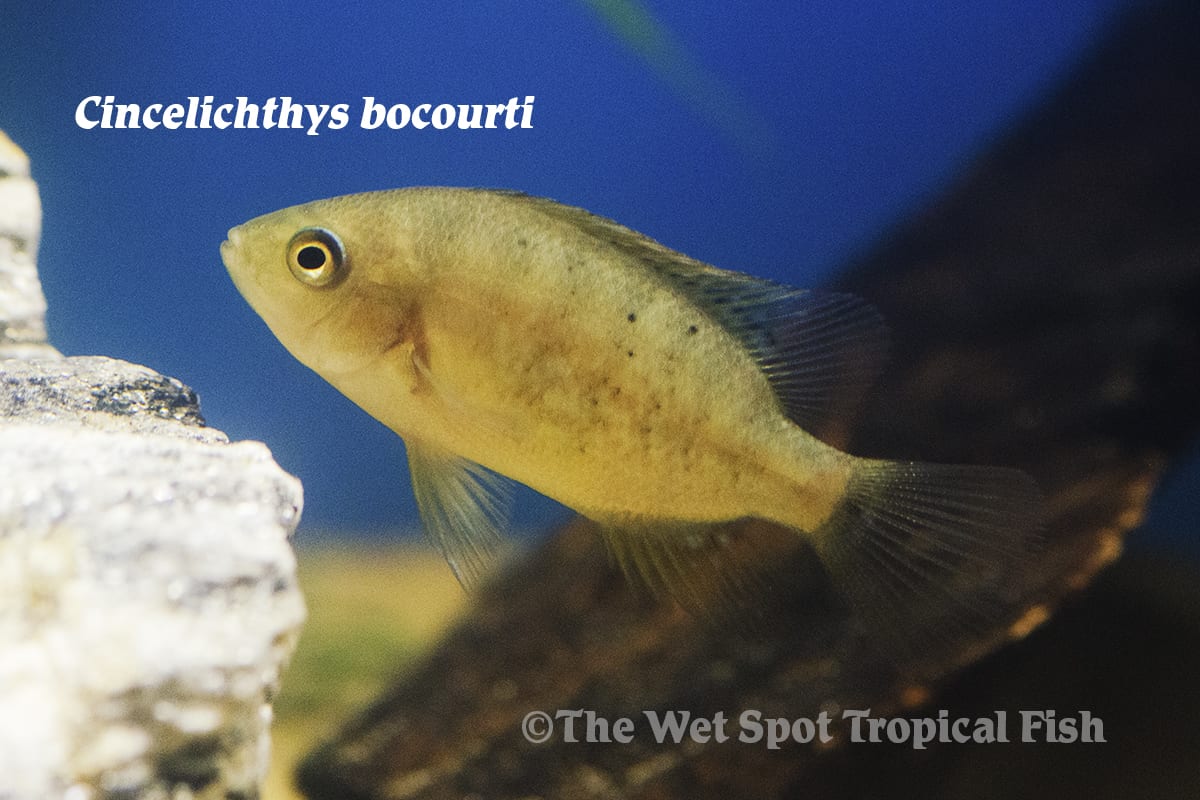Seeking Cichlids
Seeking Cichlids
Cichlids are the name of our game here at the Wet Spot. While we do have vast selections of both popular, and rare freshwater fish, our specialty is in rare cichlid species. This week we are sticking to our roots, and will highlight a beautifully unique clade of Central American Cichlids. Some of the most interesting creatures in the world are those that have adapted to new situations frequently. Central American Cichlids, for instance have a long history of habitats flooding and joining together, and then becoming isolated again in an seemingly infinite loop. This tumultuous past has led to very distinct and beautiful species that evoke wonder and amazement by freshwater aquarists fortunate enough to obtain these rare and elusive specimens.
Central American Cichlids inhabit a range of environments from brackish, to fast-flowing streams and rivers, to coastal regions of the Pacific Ocean. The predominant habitat commonality is hard, alkaline waters due to Central America’s characteristic limestone geography. In captivity, tanks should be kept with a pH between 7.0 and 8.0 with hardness around 10dH. To maintain these levels, we recommend including crushed coral in the substrate or filters, or by adding minerals like epsom salts regularly in small amounts. Native habitats for these fish hover around 77°F, though if you plan on breeding them, you may choose to keep temperatures a bit higher around 80°F.
Scientific NameMaskaheros argenteus
Common NameSilver Cichlid
Temperature / pH77-80°F / 7.0 to 8.0 pH
Native LocationMexico
Preferred DietOmnivorous
Most Central American Cichlids sift and dig, thus, soft sandy substrate is recommended for tank set ups. Plants will often be uprooted, and should be avoided, though floating plants may provide much appreciated cover and light filter. These cichlids often inhabit areas with low light, and should be kept in captivity as such. Shade and hiding places can be provided with tank furniture and driftwood logs. Stomach content analyses of wild specimens show they enjoy a range of diets in the wild, including detritus, algae, invertebrates, and small fish. In captivity, they should be fed a range of foods including some vegetal matter like blanched spinach or peas, live and frozen fare like bloodworms or daphnia, and supplementation of high quality cichlid pellets.
Scientific NameNeetroplus nematopus
Common NamePoor Man’s Tropheus
Temperature / pH77-80°F / 7.0 to 8.0 pH
Native LocationCosta Rica, Nicaragua
Preferred DietOmnivorous
These cichlids share aggressive tendencies especially when spawning, and are not suitable for most community tanks. Since they have some predatory instinct, small fish should be avoided altogether since they resemble dinner. They generally should be kept as pairs in their own tank, but can be kept as singletons in tanks with large groups of similarly sized cichlids. They often do well alongside catfish, especially Loricariids. Along with these bold personalities, come bold colors, and general hardiness, ideal for captive settings. Also keep in mind, with boisterous and territorial fish, tank size is extremely important. These cichlids need a lot of space, and should be kept in a tank with a minimum of 55 gallons, though breeding pairs do well in smaller 30 gallon tanks.
Scientific NameCincelichthys bocourti
Common NameChisel Mouth Cichlid
Temperature / pH77 to 80°F / 7.0 to 8.0 pH
Native LocationGuatemala, Belize
Preferred DietOmnivorous
Ready to take the leap into the more dog-like fishkeeping? These fish are for aquarists who enjoy making individual connections with your fish, observing their complex behaviors and intriguing personalities. Give us a call, and our experts can find the best Central American Cichlid for you!


